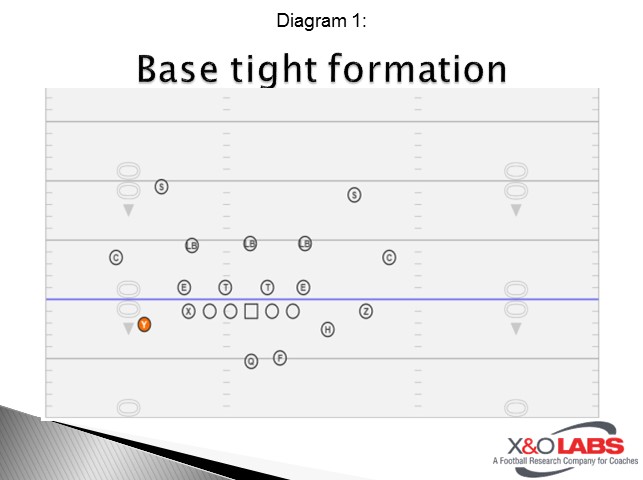By Bill Turner
Offensive Coordinator / QB coach
Buckeye High School (OH)
Twitter: @BillTurner6684
Introduction
Our version of the popular jet sweep concept is slightly different than most because we do ours from tight or compressed formations. We like running it to the field, but have had great success to the boundary as well. It has become important for us to have the ability to run it both ways based on how the defense is playing us. We will run it no huddle at a fast pace and also have the ability to check it to the best direction at the line of scrimmage. The jet also sets up our favorite run concept, the counter trey or QB counter trey.
Our goal of the jet sweep is to stretch the field horizontally by getting the ball to our best athletes moving as fast as possible trying to get it outside. We want to seal the edge with our last down lineman and our receivers. Our fullback will take on the outside force defender while working to hook him to the inside. If the FB is forced to kick him out, our ball carrier will adjust and take the ball into the alley. Later, we will cover several different ways to block this play depending on the defense’s alignment as well as using unbalanced formations to keep defense off balance.
Base Look
Our base formation for the jet is out of 11 personnel. We label our positions a little differently than most schools. F is fullback who is our best blocking back. X is our tight end. Y is our flanker also is our best jet runner. H is our adjuster and is our second-best jet runner. Z is physical blocker and deep threat.

Base Blocking Rules for The Jet
In the diagram below, we are in our base tight formation against an even defense. We are running the ball to the field away from the tight end. Our linemen are taking quick steps to the play side (known as gang steps is our terminology). We are stepping to the outside gap to hook that defender. Those to the left of the center are gang stepping as well but are looking to get downfield. If our tackle fails to hook the last lineman, he must continue to stay on him and run him up field or to the sideline.
Our H is coming down to the first man inside of him, which is often a linebacker. The Z will look for the most dangerous defender inside of him. If the Z is not threatened inside, he will go up field to the near safety. The H and Z will communicate with each other and may switch up their assignment based on the defenses alignment. Occasionally, we will have the Z take on the force man if he feels he can hook him or drive him to the sideline.
The F will take on the outside force man (usually a corner) aiming at his outside shoulder. If the corner stays wide, it turns into a kick out block.
The QB will bring the jet runner in motion with a hand signal. He is responsible for setting the ball in the jet runner’s belly and then carries out his Q counter trey fake.









